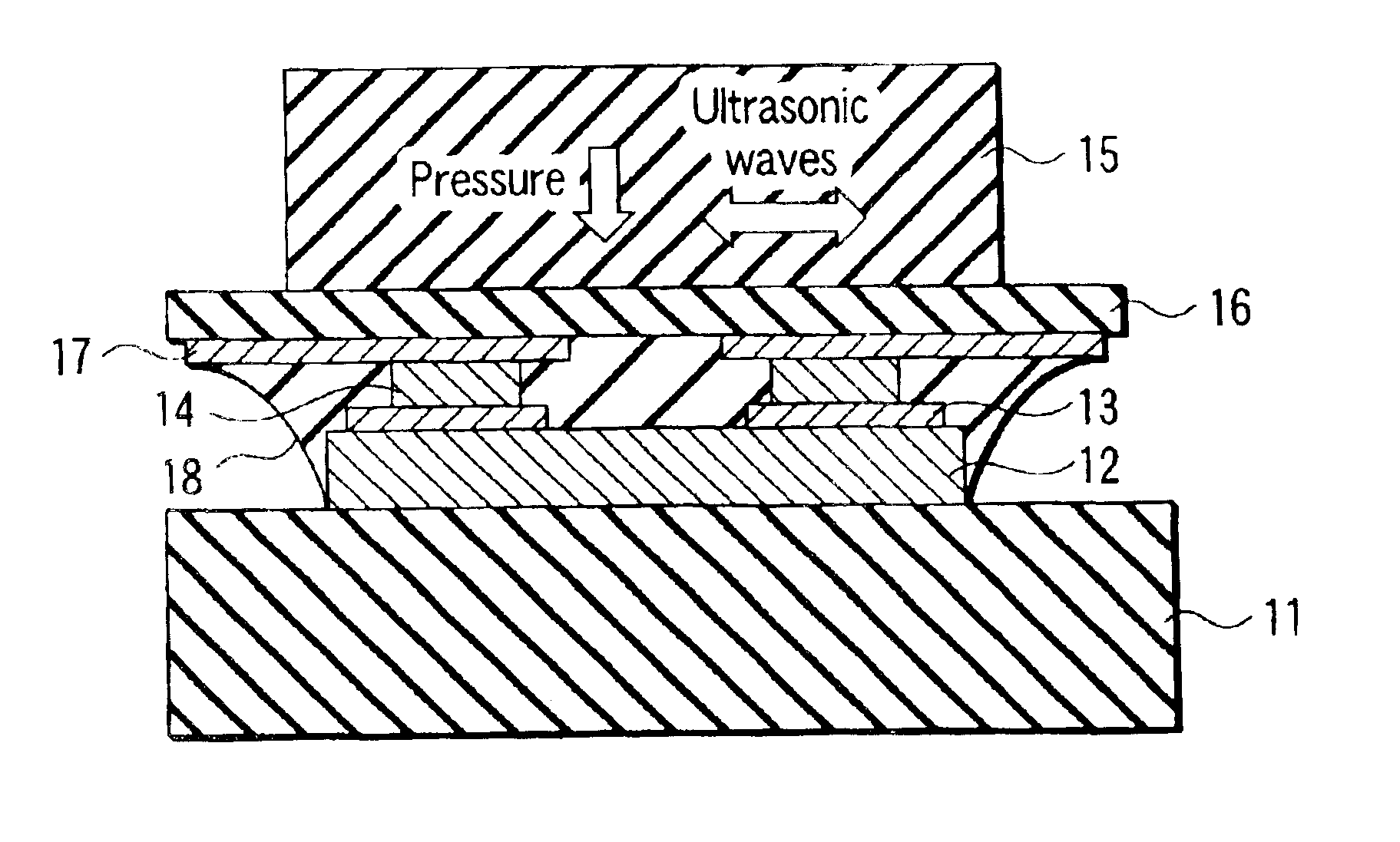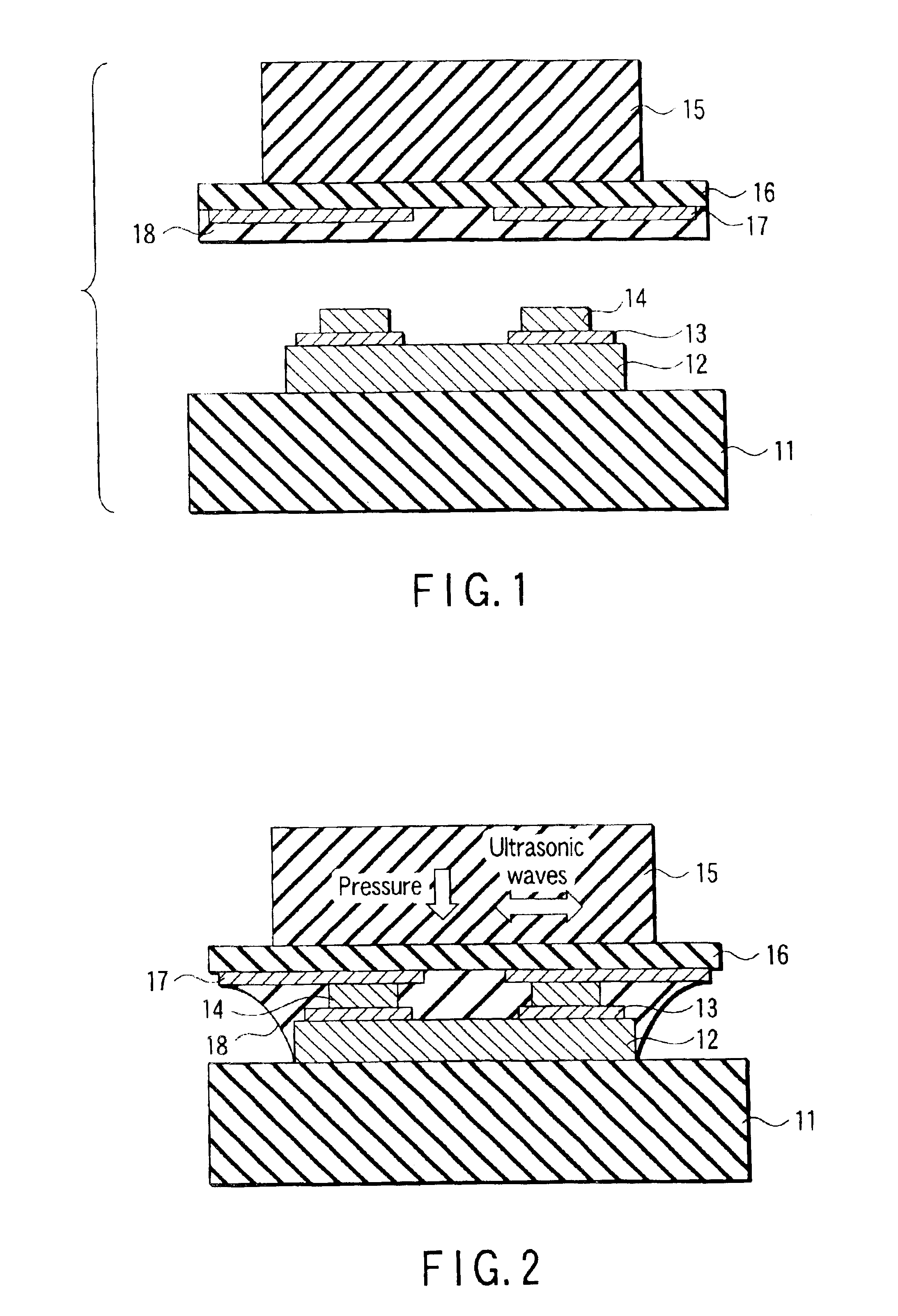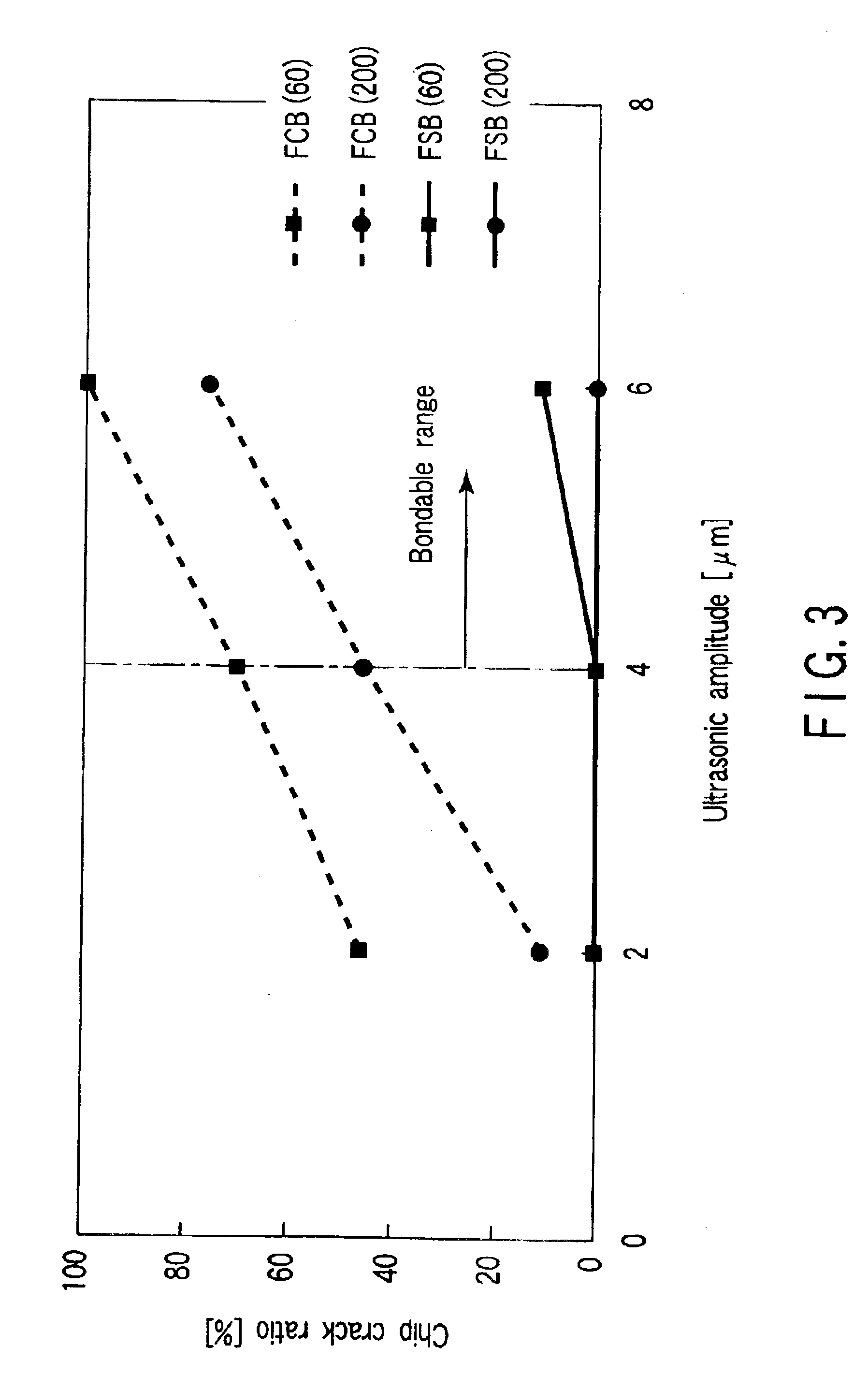Semiconductor device manufacturing method using ultrasonic flip chip bonding technique
- Summary
- Abstract
- Description
- Claims
- Application Information
AI Technical Summary
Benefits of technology
Problems solved by technology
Method used
Image
Examples
first embodiment
[First Embodiment]
FIG. 6 is a flow chart showing a manufacturing process regarding the ultrasonic flip chip bonding technique for explaining a semiconductor device manufacturing method according to the first embodiment of the present invention. Various elements are formed in a semiconductor substrate (wafer) by a known process. The wafer is then diced into chips along the dicing line or scribe line of the wafer by using a diamond scriber, diamond blade, laser scriber, or the like, thereby forming a semiconductor chip 12.
A stud bump 14 is formed on an electrode 13 of the chip 12 (STEP 1). The element formation surface (upper chip surface) of the chip 12 is coated with a sealing material 18 by spin-coating, e.g., a liquid resin (STEP 2). The sealing material 18 can also be formed by adhering a resin sheet. The lower surface of the chip 12 is chucked and fixed onto a porous stage 11 (STEP 3).
A printed circuit board 16 for mounting the chip 12 is picked up (STEP 4). A surface of the pri...
second embodiment
[Second Embodiment]
FIG. 7 is a flow chart showing a manufacturing process regarding the ultrasonic flip chip bonding technique for explaining a semiconductor device manufacturing method according to the second embodiment of the present invention. Various elements are formed in a semiconductor substrate (wafer) by a known process. The wafer is then diced into chips along the dicing line or scribe line of the wafer by using a diamond scriber, diamond blade, laser scriber, or the like, thereby forming a semiconductor chip 12.
The element formation surface (upper chip surface) of the chip 12 is coated with a sealing material 18 by spin-coating, e.g., a liquid resin (STEP 1). The sealing material 18 can also be formed by adhering a resin sheet. The chip 12 is chucked and fixed onto a porous stage 11 (STEP 2). A stud bump is formed on a wiring electrode 17 of a printed circuit board 16 (STEP 3).
The printed circuit board 16 for mounting the chip 12 is picked up (STEP 4). A surface of the pr...
third embodiment
[Third Embodiment]
FIG. 8 is a flow chart showing a manufacturing process regarding the ultrasonic flip chip bonding technique for explaining a semiconductor device manufacturing method according to the third embodiment of the present invention. Various elements are formed in a semiconductor substrate (wafer) by a known process. The wafer is then diced into chips along the dicing line or scribe line of the wafer by using a diamond scriber, diamond blade, laser scriber, or the like, thereby forming a semiconductor chip 12.
A stud bump 14 is formed on an electrode 13 of the chip 12 (STEP 1). The element formation surface (upper chip surface) of the chip 12 is coated with a sealing material 18 by spin-coating, e.g., a liquid resin (STEP 2). The sealing material 18 can also be formed by adhering a resin sheet. The lower surface of the chip 12 is chucked and fixed onto a porous stage 11 (STEP 3).
A stud bump is formed on a wiring electrode 17 of a printed circuit board 16 (STEP 4).
The print...
PUM
 Login to view more
Login to view more Abstract
Description
Claims
Application Information
 Login to view more
Login to view more - R&D Engineer
- R&D Manager
- IP Professional
- Industry Leading Data Capabilities
- Powerful AI technology
- Patent DNA Extraction
Browse by: Latest US Patents, China's latest patents, Technical Efficacy Thesaurus, Application Domain, Technology Topic.
© 2024 PatSnap. All rights reserved.Legal|Privacy policy|Modern Slavery Act Transparency Statement|Sitemap



